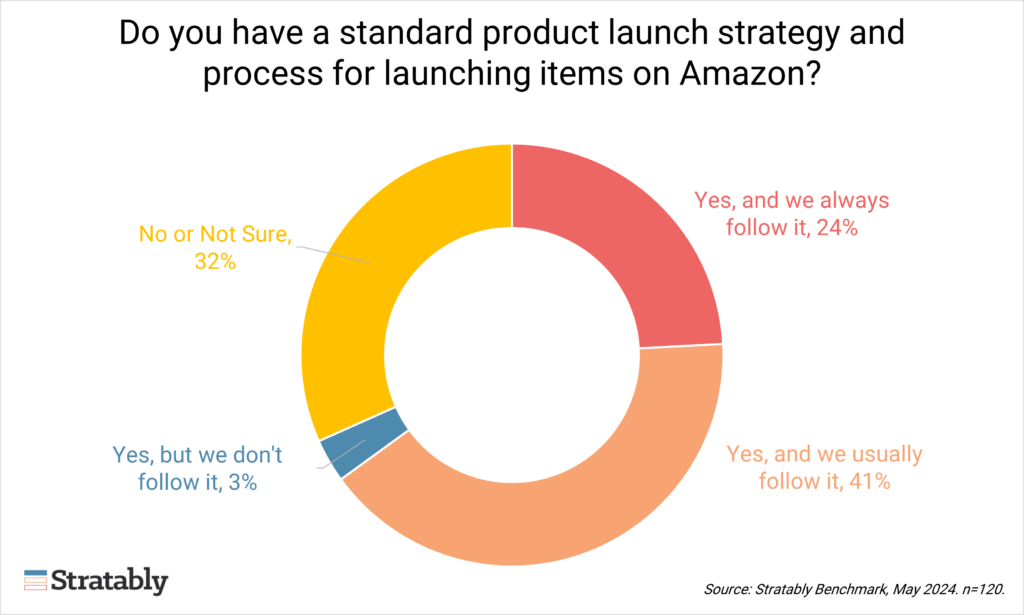June 17, 2024
2 minute read
Log in to download the full report linked at the bottom
Consumer brands built around brick & mortar (B&M) have found launching products on Amazon to be very challenging because:
- Amazon orders small initial qualities
- Amazon does not take responsibility for driving traffic to new items
- Brands must jumpstart Amazon’s algorithm to get the flywheel spinning
- Ramp up takes longer on Amazon compared to launching in a physical store
Making matters worse is that brands don’t often think of Amazon when it comes to launching new products, let alone in the early stages of the development process.
This is a missed opportunity as brands are ignoring a treasure trove of data that could complement all the traditional research inputs and efforts that go into new product development. Further, launching new items with incomplete content or limited marketing support puts brands at a severe disadvantage within Amazon’s ultra-competitive marketplace.
These challenges, both inherent to Amazon and self-imposed by brands, are particularly relevant this year as bringing product innovation to market is the cornerstone of most brands’ growth strategies. After several years of price increases, brands have turned their attention to launching new products in the hopes of generating demand amidst a value-focused consumer backdrop.
Thus, brands must develop a repeatable, sound approach to launching products on Amazon. But according to our data, they are more likely to have no process at all compared to those that do and actually follow it.

In order to improve these numbers, we dove into new product launches on Amazon to understand what’s working for brands. Our study includes:
- Review of our research methodology
- Amazon product launch FAQs
- Self-assessment of product launch strategies and tactics
- Self-evaluation questions
- Leveraging Amazon to inform product innovation
- Maximizing the honeymoon period
- Content, inventory, ratings and reviews
- Advertising and promotions
- Other factors like Brand Stores, Posts, vendor managers (VMs), and Amazon Vendor Services (AVS)
- Metrics, expectations, and launch timing
- Examples of brands putting digital first with product innovation
We recommend eCommerce leaders review the full report and then share it with their colleagues in brand management, new product development, and the C-suite in order to develop a strong Amazon product launch process.
The full report includes a self-assessment framework, 10 self-evaluation questions and 23 pages of insights we developed from our benchmarking, interviews, sharegroups, and additional data inputs we studied.
Once logged in, you’ll see the PDF download link directly below.
Join the Stratably community
-
Bite-sized market updates
-
Deep dive analyses
-
Industry benchmarks
-
Retailer forecasts
-
Invites to live events
-
And More!
Enterprise Membership unlocks our full insights that you and your team can use to drive alignment across your organization, improve your forecasting, and invest in the right capabilities.
Simply put, it makes your organization much more informed, providing a competitive edge over your rivals.


